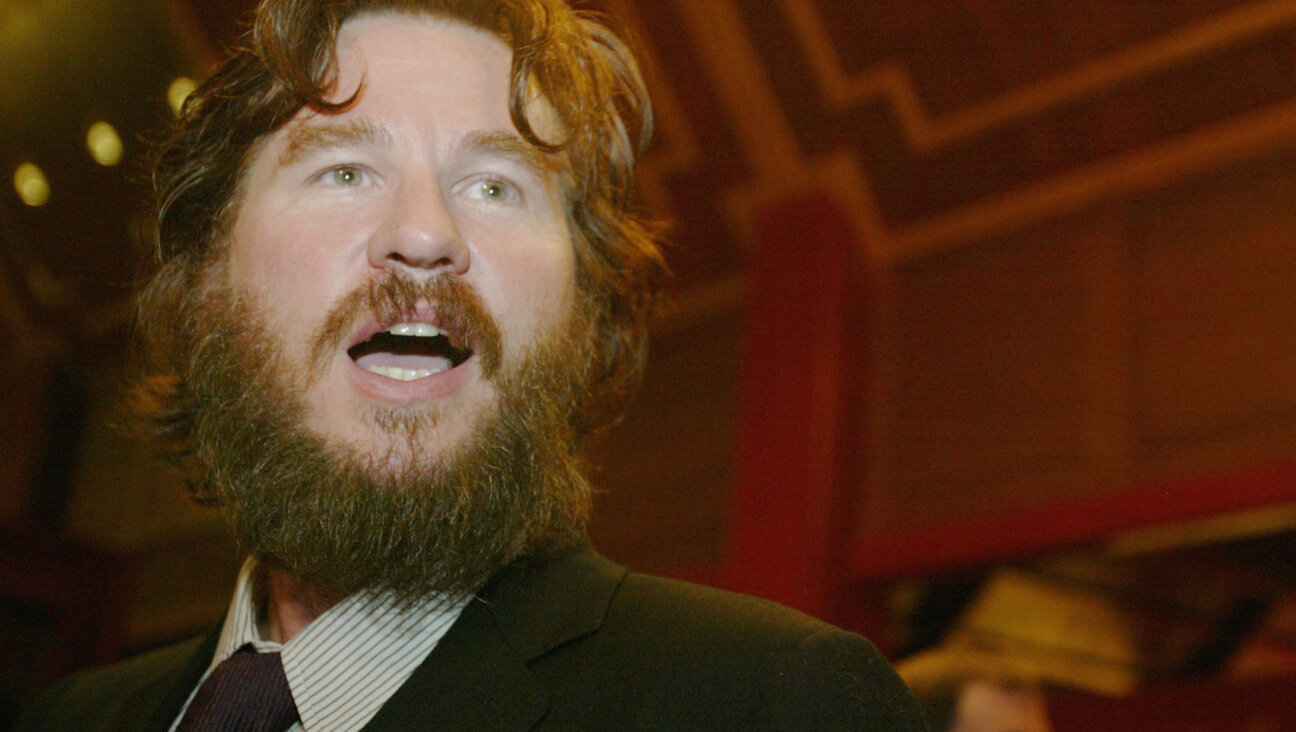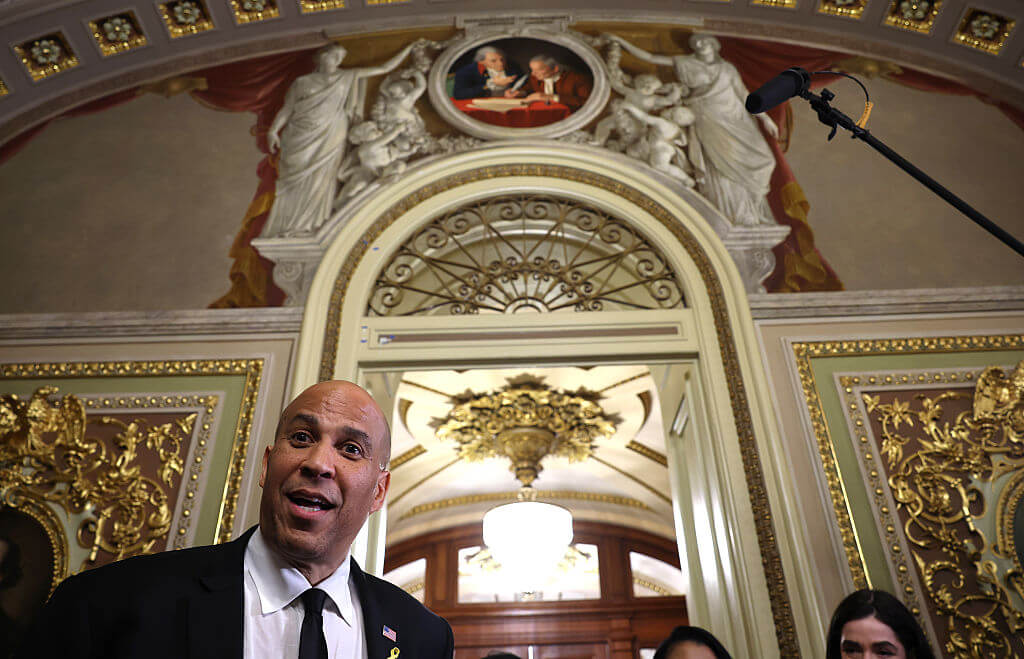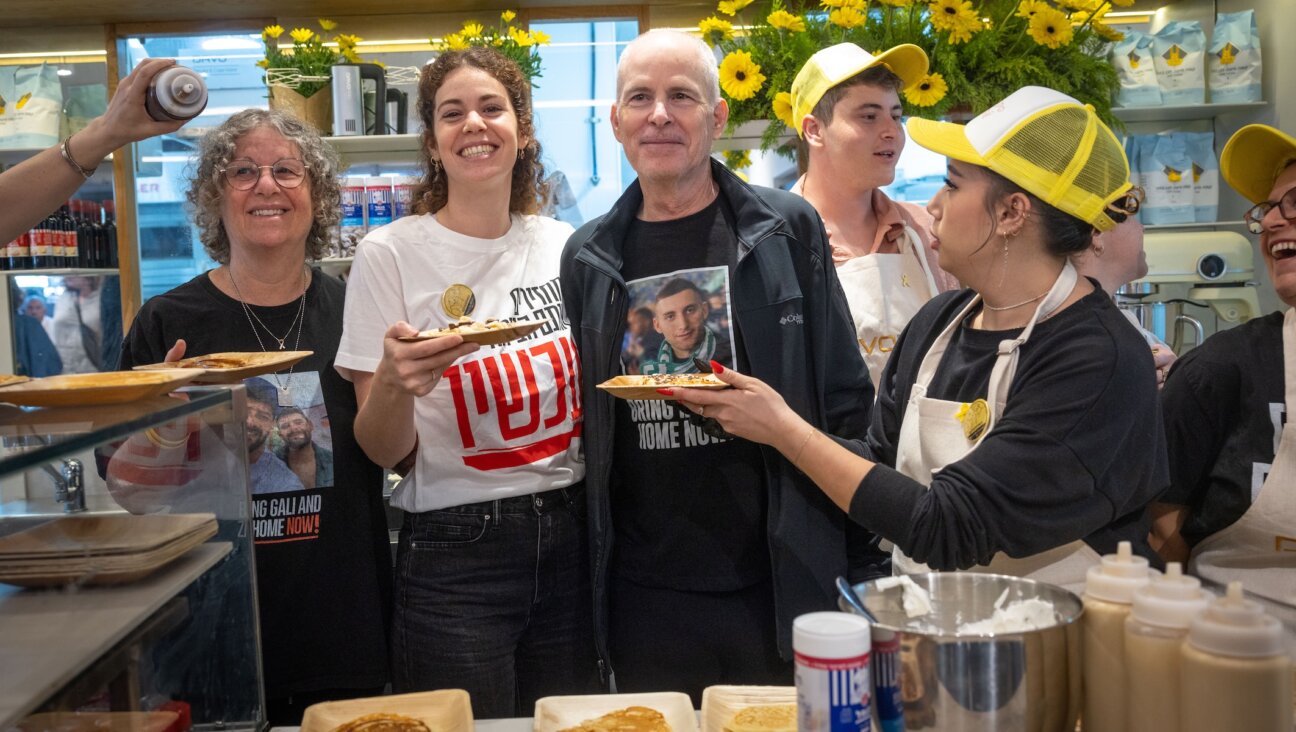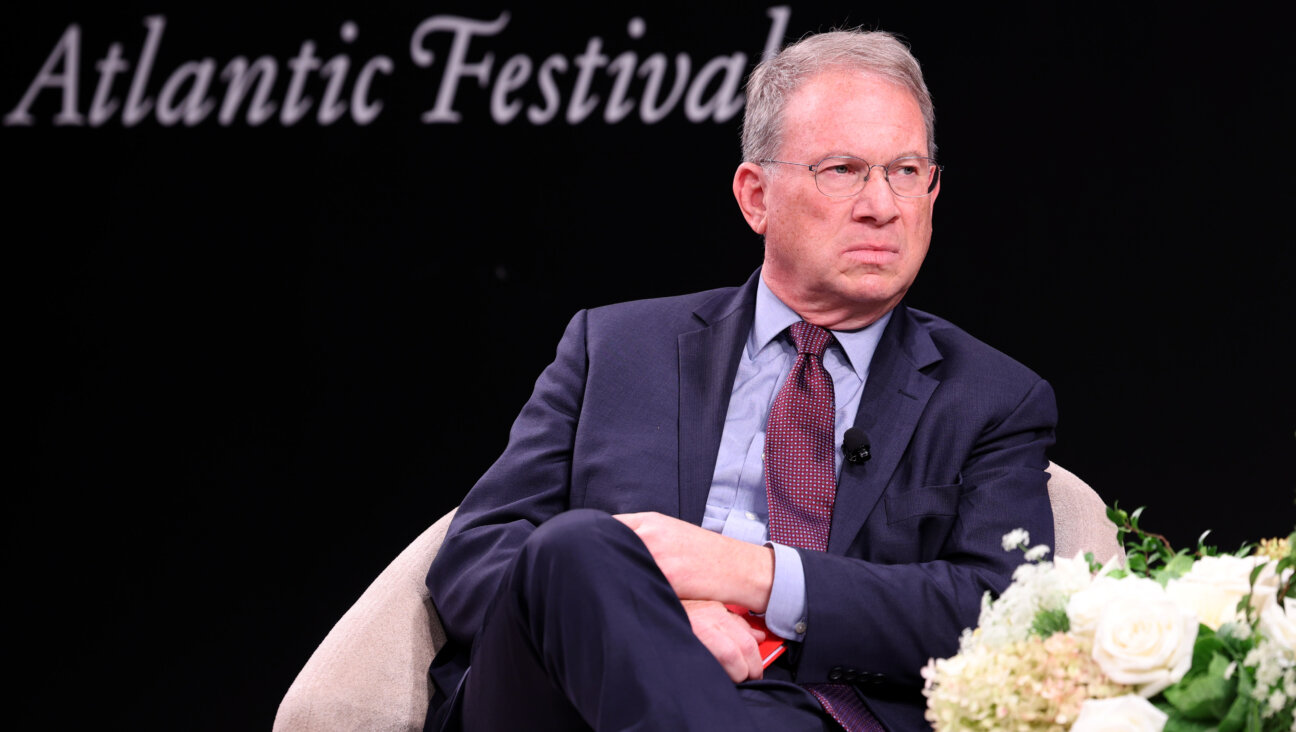Punk Rock’s Secret, Semitic History
Punk rock’s most revered founders include a yeshiva alum named Tamás Erdélyi and a Bronx Jew known to his family as Richard Blum. No, they weren’t managers, producers or label honchos; Erdélyi and Blum are living legends of the mid-1970s punk rock scene, widely celebrated for their bands’ revolutionary three-chord masterpieces.
Both men are also better known by their stage names, Tommy Ramone and Handsome Dick Manitoba.
Ramone, the sole surviving member of the Ramones, and Manitoba, frontman for the Dictators, were hardly the only Jews to shape the movement, as a capacity crowd learned in a program at the YIVO Institute for Jewish Research, located in Manhattan’s Chelsea area. Lenny Kaye, who’s a guitarist for the Patti Smith Group, and Blondie co-founder Chris Stein joined Manitoba and Ramone in a panel discussion on “Loud, Fast Jews” of New York punk rock.
Kaye, who also served as moderator, warmed up the panelists by asking about their family backgrounds and bar mitzvah memories before moving on to more difficult topics, such as the movement’s controversial appropriation of Nazi imagery. But one central question pervaded the evening’s discussion: How much did Jewish culture influence punk rock?
As the musicians acknowledged, it seems counterintuitive to draw parallels between Judaism and punk: The stereotypes attached to each culture seem mutually exclusive. “You don’t expect Jews to be good in the scuffle of anti-establishment movements,” Kaye said. “Jews were groomed for white-collar jobs.” His parents did not consider making music a “real job,” he recalled. “Jews aren’t supposed to be tough guys,” Manitoba added. “They’re supposed to go to school and be nebbishy.”
Although Jews have made countless contributions to American popular music, Harold Steinblatt, YIVO’s director of cultural affairs and the June 11 event’s organizer, noted that punk was unusual because so many of its progenitors were Jewish.
New York’s pioneering punk scene found its headquarters at CBGB, an East Village dive that served as both performance space and clubhouse before it closed in 2006. The bar’s proprietor, Hilly Kristal, along with CBGB’s fixture and the city’s central punk icon, Joey Ramone (né Jeffrey Hyman), was born into a Jewish family. So was the genre’s forefather, Lou Reed. British punk’s notorious ringmaster Malcolm McLaren is the son of shmatte factory owners. Is this merely a coincidence, or is there something particularly Jewish about the music itself?
“There is a sense of being an outsider in music,” Kaye said, just as growing up in a religious minority may have isolated some Jews who became punks. In a later phone interview, he also cited the cultural influences he had derived from Judaism — “a love of the minor key, a sense of community and clan.” The setting for the music was important, too, he said, because “CBGB’s was a kind of strange ghetto with its own vocabulary and customs.”
Panelists also praised the influence of Jewish artists, entertainers and activists on punk music. Ramone credited Bill Gaines’s Mad Magazine and pulpy EC Comics for teaching him that “sometimes being outrageous is important.” Kaye pointed to the Jewish radical tradition and the folk music of Israeli kibbutzim, while Manitoba reminisced about the Catskills comedians of his youth. “I’m sure that what I spit back has a little Shecky Greene in it,” he admitted, chuckling.
But Stein — and all the panelists, to varying degrees — worried about overstating the connection between punk and Jewish religion and identity. “My Jewishness has always been there, but it’s not an integral part of me,” he said. Raised in Brooklyn’s Flatbush area by secular parents, Stein dismissed punk’s ties to Judaism as “just another facet for people to analyze.”
Perhaps because so many punks assumed stage names in the ’70s, most were unaware of how many other Jews participated in the scene until 2006, when Steven Lee Beeber published “The Heebie-Jeebies at CBGB’s: A Secret History of Jewish Punk” (Chicago Review Press). As Kaye explained, musicians were so wrapped up in absorbing and creating various religious modes of rock ’n’ roll that individuals’ cultural and spiritual backgrounds seemed beside the point.
Sometimes, what Kaye referred to as punk’s use of “shock imagery” even could appear to be antisemitic. Yet when bands referenced Nazism, as Manitoba’s Dictators did in their song “Master Race Rock” (1975), the intent was to satirize and reclaim noxious words and images. “There’s a cathartic effect when you take your deepest fear,” Ramone told the audience, “and either make humor of it, or, in an artistic sense,” transform it. Ramone believes that few artists were truly antisemitic, although he never endorsed plastering swastikas on everything from clothing to concert fliers. “The whole thing that became called punk — we never had any control over it,” he said.
Manitoba compared the use of Third Reich imagery by punk rock bands to Mel Brooks’s films, which poke fun at Nazis. During the panel, he confessed to crying when he watched “Schindler’s List,” and said he would be upset to learn that “Master Race Rock” hurt anyone. Later, in the phone interview, he told of visiting Arturo Vega, the designer famous for creating the Ramones logo, who had an Andy Warhol swastika painting hanging on his wall. “It was his idea of art. I didn’t like it, but I laughed at Mel Brooks,” Manitoba said. “There really is no universal morality for what is truly funny.”
Judy Berman is a writer and editor who lives in Brooklyn.
The Forward is free to read, but it isn’t free to produce

I hope you appreciated this article. Before you go, I’d like to ask you to please support the Forward.
At a time when other newsrooms are closing or cutting back, the Forward has removed its paywall and invested additional resources to report on the ground from Israel and around the U.S. on the impact of the war, rising antisemitism and polarized discourse.
Readers like you make it all possible. We’ve started our Passover Fundraising Drive, and we need 1,800 readers like you to step up to support the Forward by April 21. Members of the Forward board are even matching the first 1,000 gifts, up to $70,000.
This is a great time to support independent Jewish journalism, because every dollar goes twice as far.
— Rachel Fishman Feddersen, Publisher and CEO
2X match on all Passover gifts!
Most Popular
- 1

News A Jewish Republican and Muslim Democrat are suddenly in a tight race for a special seat in Congress
- 2

Film & TV What Gal Gadot has said about the Israeli-Palestinian conflict
- 3

Fast Forward The NCAA men’s Final Four has 3 Jewish coaches
- 4

Fast Forward Cory Booker proclaims, ‘Hineni’ — I am here — 19 hours into anti-Trump Senate speech
In Case You Missed It
-

Film & TV Val Kilmer was the voice of my generation’s Moses (and God)
-

Fast Forward Cory Booker spoke at a synagogue on Yom Kippur. Its rabbi says Jews should learn from his 25-hour Senate speech.
-

Fast Forward Cory Booker’s rabbi has notes on Booker’s 25-hour speech
-

Fast Forward Naftali Bennett is back: Former Israeli prime minister will make another run at Netanyahu
-
Shop the Forward Store
100% of profits support our journalism
Republish This Story
Please read before republishing
We’re happy to make this story available to republish for free, unless it originated with JTA, Haaretz or another publication (as indicated on the article) and as long as you follow our guidelines.
You must comply with the following:
- Credit the Forward
- Retain our pixel
- Preserve our canonical link in Google search
- Add a noindex tag in Google search
See our full guidelines for more information, and this guide for detail about canonical URLs.
To republish, copy the HTML by clicking on the yellow button to the right; it includes our tracking pixel, all paragraph styles and hyperlinks, the author byline and credit to the Forward. It does not include images; to avoid copyright violations, you must add them manually, following our guidelines. Please email us at [email protected], subject line “republish,” with any questions or to let us know what stories you’re picking up.














